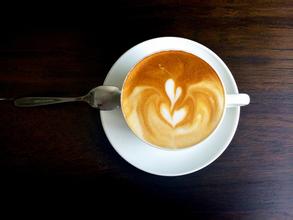Flavor and taste characteristics of coffee manor in Nicaragua introduction of boutique Coffee Bean Tianji Manor
Managua, the capital of Nicaragua, is located in the west of the border, on the south bank of Lake Managua, hence its name. The northwest is 140 kilometers away from the Collinto seaport on the Pacific coast. 55 meters above sea level. It is a Spanish city with beautiful scenery. Because it is located on the east side of the Pacific volcanic active seismic belt, there have been four strong earthquakes in the city in the past 100 years, one of which caused the worst damage to the city in December 1972. The rebuilt Managua has taken many important measures in reducing population density, moving large enterprises to other places and improving the earthquake-proof capacity of buildings. The word Managua comes from the Indian Naval language, and its meaning has two interpretations, one is "Mexican place", and the other is "waterside". About 10,000 years ago, there were human activities on the shores of Lake Managua, and the remains of ancient human activities can be seen from the Acorink site. As a result of natural disasters such as earthquakes, residents have moved many times. When the Spaniards conquered Nicaragua in the early 16th century, it was still an important Indian village. It became a city in 1846. It was designated as the capital of the Republic in 1852. From then on, it became the political center of the country.
Masaya
A city in southwestern Nicaragua and capital of Massaya province. Located at the eastern foot of Masaya Volcano, 25 kilometers northwest from Managua. The population is 43000 (1980). The industrial and commercial center of the surrounding agricultural area (which mainly produces tobacco). Famous for producing Indian handicrafts (embroidery, palm hats, etc.). There are tobacco, shoes, soap, leather and other industries. Railway, road and air transportation are convenient.
Xenotepe
A city in southwestern Nicaragua and the capital of Karaso province. Located in the Diliamba Highlands, 760 meters above sea level. The population is 18000 (1980). Founded in 1883. Distribution and processing center of agricultural and animal husbandry products. There are limestone, salt mines and other mining industries nearby. Railway and highway to Managua DIPILTO, NUEVA SEGOVIA
Dipilto is located on the border between Nicaragua and Honduras and is the smallest municipality directly under the Central Government of Nicaragua.
Dipilto Coffee has won 29 medals in Cup of Excellence for three consecutive years.
Fertile soil, high altitude and suitable climate throughout the year make it one of the top coffee growing areas in Dipilto, Nicaragua.
Dipilto is one of the smallest municipalities directly under the Central Government in Nicaragua, covering an area of 106square kilometers. 90% of the population, 5000 of the residents live in rural areas. Dipilto is famous for its pine forests, warm climate, religion, people's loyalty and its high-quality coffee.
Coffee cultivation is one of the traditions maintained by the local people of Dipilto. The fertile soil is full of organic matter, and 1200 meters above sea level provides a pleasant climate, which is very suitable for growing coffee. The average temperature of 20 degrees Celsius and annual rainfall satisfy the growth of Dipilto traditional Arabica coffee. Live in harmony with nature and specialized planting management, resulting in high-quality coffee.
A small 3000-hectare coffee plantation is considered to be the leader in coffee quality in Nicaragua. It has won 29 medals at Cup of Excellence for three years in a row, and its online auction has reached a record price, much higher than the price in the general market.
PS. Because raw beans need to be roasted in the factory, it will take about 3 to 5 working days after the order is paid before they can be delivered to you. Thank you for your patience in many countries. Coffee production will be seriously affected due to political reasons. Nicaraguan coffee industry is no exception. The 1979 revolution forced coffee planters to flee to Miami. A period of indecision followed, when the government considered whether to redistribute land, including many plantations, which led to a shortage of coffee and a decline in production, from more than 1 million bags in the early 1970s to less than 600000 bags in 1990. Now the Government has opened up the coffee industry and private owners have taken control of the market. The best coffee is produced in Sinotega and Novo Segovia in Matagalpa. It has moderate acidity, delicious aroma and is very popular with high-quality Nicaraguan coffee, grown in the north and middle of the country. Coffee is a pillar industry in Nicaragua, producing nearly 100,000 tons of coffee beans every year. Many people who have tasted Nicaraguan coffee usually think that it is no different from Salvadoran coffee or Honduran coffee. It is full-bodied, smooth and delicate, with a bitter finish, like the faint taste of Nicaragua in central Central America, bordered by the Pacific Ocean to the west and the Caribbean Sea to the east. The highlands in the north and the coastal plains in the east are part of the Central American volcanic belt. The eastern plain is high-temperature and rainy, with a tropical maritime climate. The suitable climate provides an excellent growth environment for the cultivation of coffee.

Important Notice :
前街咖啡 FrontStreet Coffee has moved to new addredd:
FrontStreet Coffee Address: 315,Donghua East Road,GuangZhou
Tel:020 38364473
- Prev

The flavor and taste characteristics of Columbia coffee manor with high balance hope that the boutique coffee beans of the manor
President Washington named the D.C. Columbus in memory of Columbus's discovery of the New World. The new capital was not yet built, and Washington died in 1799. In honor of him, the federal government and Congress named the new capital Washington when it was completed the following year (1800). What is commonly referred to as the capital refers to the area occupied by federal government agencies; in the case of the District of Columbia, it refers to the area occupied by residents
- Next

Introduction to the unique and strong flavor and taste of Costa Rican Fire Phoenix Manor Coffee
The research center, located about 30 kilometers northeast of the Costa Rican capital San Jose, belongs to the Costa Rican Coffee Association and is a research institution for villa sarchi planting, breeding and quality inspection newly developed by Costa Rica's national coffee breeds. in addition, it also has 10 hectares of experimental plots, planting a number of excellent varieties. Coffee is the main agricultural product in Costa Rica, with an annual output of more than 2 million bags
Related
- Does Rose Summer choose Blue, Green or Red? Detailed explanation of Rose Summer Coffee plots and Classification in Panamanian Jade Manor
- What is the difference between the origin, producing area, processing plant, cooperative and manor of coffee beans?
- How fine does the espresso powder fit? how to grind the espresso?
- Sca coffee roasting degree color card coffee roasting degree 8 roasting color values what do you mean?
- The practice of lattes: how to make lattes at home
- Introduction to Indonesian Fine Coffee beans-- Java Coffee producing area of Indonesian Arabica Coffee
- How much will the flavor of light and medium roasted rose summer be expressed? What baking level is rose summer suitable for?
- Introduction to the characteristics of washing, sun-drying or wet-planing coffee commonly used in Mantenin, Indonesia
- Price characteristics of Arabica Coffee Bean Starbucks introduction to Manning Coffee Bean Taste producing area Variety Manor
- What is the authentic Yega flavor? What are the flavor characteristics of the really excellent Yejasuffi coffee beans?

